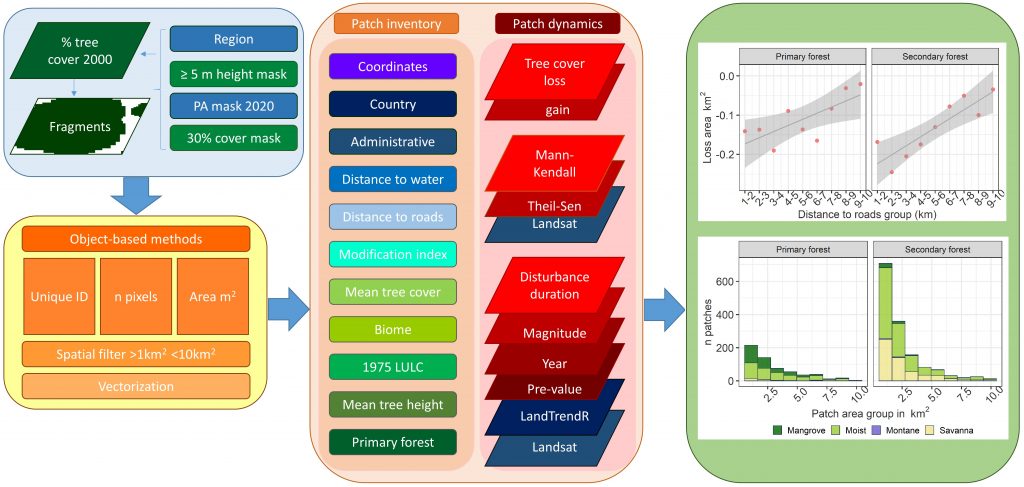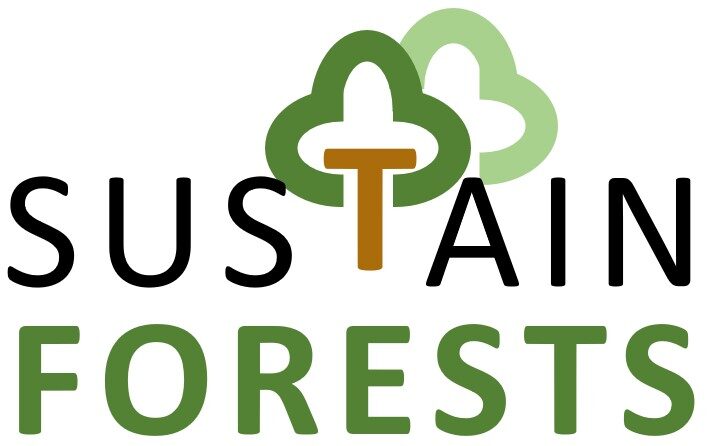A remote sensing-based inventory of West-Africa tropical forest patches
Vladimir R. Wingate, Felicia O. Akinyemi, Chima J. Iheaturu, Chinwe Ifejika Speranza
Land Systems and Sustainable Land Management, Institute of Geography, University of Bern, Hallerstrasse 12, 3012 Bern
Abstract
The rate of tropical forest fragmentation is increasing globally. This process is essentially driven by commodity demands on the international market, and consequent conversion of forested lands to agricultural land-uses. The extension of urban settlements and other land uses such as roads, infrastructure, small-scale clearing, selective logging, fire, and natural disturbance are major drivers of tropical forest loss and fragmentation. Even though tropical forests are an essential component of the earth system, and fundamental for biodiversity conservation, ecosystem functioning and social well-being, anthropogenic pressures continue unabated and at an increasing rate. Indeed, recent research has shown that forest fragmentation and loss are particularly high in arable landscapes where fragments are smaller, reflecting their easier access. As such, there is an urgent need to map and monitor the dynamics of remaining smaller tropical forest patches/fragments and identify their multiple benefits and values. Recognizing their existence is expected to help ensure their continued provision of social-ecological functions, while facilitating their conservation. The main objective of this study is therefore to inventory and characterise the current extent of forest patches for a West-Africa region (Nigeria), by combining multi-source remote sensing products, time-series analyses, and ancillary datasets. Here, we collated and analysed descriptive and dynamics metrics derived from various sources, and provide estimates of fragment size, age, biophysical conditions, and relation to social-ecological variables, which together provide insights into their dynamics over four decades. Specifically, forest patches with a tree cover ≥ 30%, a tree height of ≥ 5 m, an area ≥ 1 hectare and ≤ 10 km2 and which are outside of protected areas, are mapped. Appended to each patch are descriptive (country, administrative region, coordinates, area, biome, distance to water and roads, tree height and cover, primary/secondary forest, estimated age) and dynamics attributes (land cover in 1975, forest loss/gain, as well as trend and disturbance metrics for last two decades). We find tree cover loss is widespread, the more numerous smaller fragments cumulatively lose a greater forested area, while fragment number increased slightly (2000-2020). Widespread greening occurs in larger fragments, the trend is pronounced for secondary forests (which predominate). Patch size is related to human disturbance metrics, e.g., distance to roads, larger patches being more distant. Thus, this inventory forms the basis for understanding forest patch change and condition, as well as prioritizing them for in-depth, social-ecological field investigation and conservation.
Keywords: Remote sensing, deforestation, forest fragmentation, forest patches, forest change

